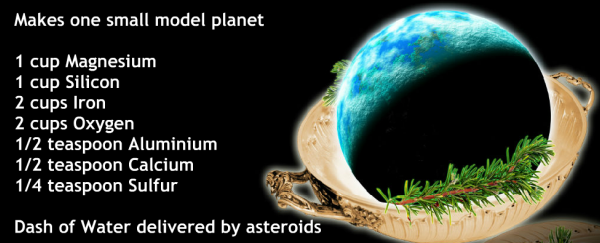It's been two decades since astronomers first discovered an 'Earth-like' planet. Since then, a catalogue of almost 2,000 Earth-like planets - also known as exoplanets - has been compiled, signifying that small cosmic bodies made of rock that orbit a distant star are actually pretty common. And now, in an effort to figure out how these Earth-like planets form, scientists have come up with a detailed 'recipe', which shows that they're made up of the exact same stuff as our home planet.
Presenting their research at the meeting of the American Astronomical Society earlier this week, the team described how the use of the HARPS-North instrument on the 3.6-metre Telescopio Nazionale Galileo on the Canary Islands allowed them to make highly accurate measurements of the masses of a number of small, Earth-sized worlds. Using this information, they were then able to deduce the average densities of these planets, and from that information, they figured out their compositions. What they found was that many of these exoplanets are made up of the exact same stuff as Earth.
"Our Solar System is not as unique as we might have thought," lead author Courtney Dressing, from the Harvard-Smithsonian Centre for Astrophysics (CfA), said in a press release. "It looks like rocky exoplanets use the same basic ingredients."
With the help of the HARPS-North instrument, the team has been examining planets that are less than two times the diameter of Earth. They targeted Kepler-93b, which is 1.5 times the size of Earth, and spins in a narrow 4.7-day orbit around its star. They were able to figure out its mass and composition, and confirmed that it's rocky, just like Earth.
Next, they gathered together all documented exoplanets with a known mass and a diameter less than 2.7 times Earth's - there were 10 of them. What they found was that just because you've got a similar size to Earth and orbit a star, that doesn't mean you'll necessarily have a similar composition to Earth, or even a rocky one.
"When they compared known exoplanets, the researchers found that not all Earth-size planets were Earth-like," says Rachel Feltman at The Washington Post. "Some of them have very low densities relative to Earth. But in general, density went up as mass went down. This is in line with what we already know - that larger planets are usually made of gas and ice, while small ones are more likely to be dense solids."
When the team examined the exoplanets with diameters smaller than 1.6 times the Earth's, they found that these planets had tight relationship between their respective masses and sizes, and were likely to be rocky. Venus and Earth - known rocky planets - also fit nicely into this model. And when they drilled down, figuratively, into their compositions, they found that they have the exact same chemical composition as Earth. It's so precise, they could list the relative amounts of 'ingredients'.
So… what's the point of the recipe? Well, now astronomers know that if they want to search for planets that are super-similar to Earth - so similar that they could harbour life - they should be focussing in on planets with less than six times the mass of Earth. For these planets, there's a good chance they'll have the same composition as Earth.
"To find a truly Earth-like world, we should focus on planets less than 1.6 times the size of Earth, because those are the rocky worlds," said Dressing.
The research has been accepted for publication in The Astrophysical Journal.
Sources: The Harvard-Smithsonian Centre for Astrophysics, The Washington Post
